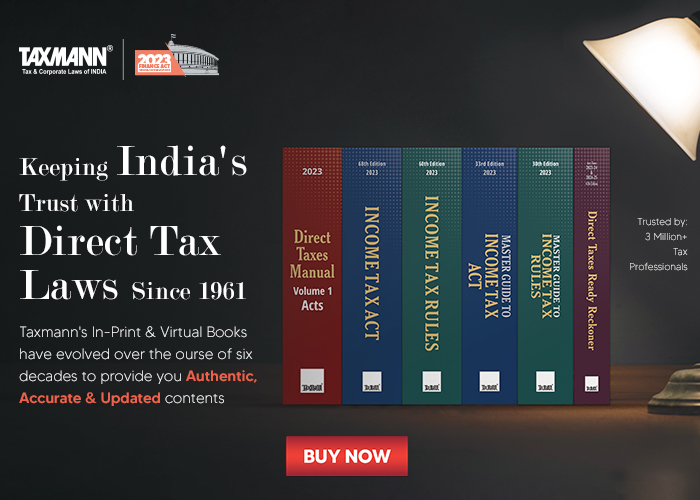Composite and Mixed Supply under GST – Definitions | Key Concepts | Case Studies
- Blog|GST & Customs|
- 16 Min Read
- By Taxmann
- |
- Last Updated on 10 January, 2025
Under GST, composite supply refers to the supply of two or more goods or services that are naturally bundled and supplied together in the ordinary course of business. One of these supplies is considered the principal supply, which gives the transaction its dominant character. For example, if goods are supplied along with transportation and insurance, it forms a composite supply where the goods are the principal supply. On the other hand, mixed supply occurs when two or more goods or services are supplied together for a single price but are not naturally bundled. Each item in a mixed supply could be supplied independently, and the highest applicable GST rate among the items is applied to the entire package. An example is a gift basket containing different items like chocolates, juices, and sweets, where none of the items is the principal supply.
Table of Contents
- Composite Supply
- Guidance Issued by GST Council for Composite Supplies
- Mixed Supply
- Guidance Issued by GST Council for Mixed Supplies
- Case Study A
- Case Study B
- Key Advance Rulings Pronounced under GST on ‘Composite’ and ‘Mixed’ Supplies
Check out Taxmann's GST on Works Contract & Other Construction/EPC Contracts which provides a detailed analysis of GST as it applies to works contracts, construction projects, and EPC contracts, with expanded coverage on input tax credit, advances, security deposits, and liquidated damages. It includes the latest amendments from the Finance (No. 2) Act, 2024 and provides sector-specific insights for industries like oil & gas, real estate, and power generation. It also covers case studies, international comparisons, and practical strategies for managing tax controversies.
In order to understand the concepts of ‘composite’ and ‘mixed’ supplies, it may be useful to delve into the European origins of these concepts – for a detailed reading in this regard, readers may peruse the detailed article by the name “GST – Drawing Splits and Bundles from Composite and Mixed” by Mr. Manish Sachdeva*.
While the European Sixth Directive 2006 on VAT and UK VAT Act, 1994 do not explicitly mention these concepts, comparable concepts of Single and Multiple Supplies have evolved over the years with the jurisprudence established by national courts in various European countries and Court of Justice for European Union (ECJ). The first landmark ruling in this regard came from ECJ, in the case of Card Protection Plan Ltd. v. Commissioners of Customs and Excise [C-349/96]/[2012] 22 taxmann.com 176 (ECJ).
The appellant, CPP, provided insurance services for the loss caused by fraudulent misuse of credit cards; such insurances were covered with other re-insurance providers. CPP claimed exemptions from VAT, as insurance services were exempt. The VAT authorities, on the contrary, argued that CPP actually offers card handling services of which insurance was incidental element. The question before ECJ was to rule upon the nature of services carried out by CPP. The ECJ, holding that the services were insurance services, provided following thumb rules for resolving such disputes:
- Every supply of services must normally be regarded as distinct and independent supply
- The supply which comprises of a Single Economic Service from Economic Point of view should not be artificially split.
- Essential features of transaction must be ascertained to determine whether supplies constitutes several distinct Principal Services or a Single service.
- The services is only Single when one (or more elements in combined) are Principal and one or more element are ancillary.
- And an ancillary service is not an aim in itself, but a means of better enjoying the Principal Service.
Readers would recall that the first draft of the Model GST Law of June, 2016 introduced the concept of ‘composite supply’ to mean two or more goods or services or goods and services which are supplied together in the course or furtherance of business. However, this concept was crystallized by the revised draft of the Model GST Law of November, 2016 wherein the definition of composite supply was completely changed and replaced to mean two or more taxable supplies of goods or services which are naturally bundled in the ordinary course of business. The revised draft also introduced the definition of ‘mixed supply’ to mean two or more individual supplies of goods or services for a single price.
The definitions as used in the final GST laws are discussed below:
1. Composite Supply
Section 2(30) of the CGST Act defines “composite supply” as a
“Supply made by a taxable person to a recipient consisting of two or more taxable supplies of goods or services or both, or any combination thereof, which are naturally bundled and supplied in conjunction with each other in the ordinary course of business, one of which is a principal supply
Illustration.— Where goods are packed and transported with insurance, the supply of goods, packing materials, transport and insurance is a composite supply and supply of goods is a principal supply”
A ‘principal supply’ has been defined under section 2(90) of the CGST Act to mean the:
“Supply of goods or services which constitutes the predominant element of a composite supply and to which any other supply forming part of that composite supply is ancillary. Basis the foregoing, it can be observed that the concept of ‘dominant intention test’ has been granted statutory approval in the GST regime in the context of ‘composite supplies’’
Further, an ancillary supply within a ‘composite supply’ can be identified on the basis of the following factors:—
- It is a means of better enjoying the dominant thing supplied, and is not an aim in itself for the recipient/customer1 or
- It is necessary or contributes to the supply as a whole, but cannot be identified as the dominant part of the supply; or
- It contributes to the proper performance of the contract to supply the dominant part;
- It represents a marginal proportion of the total value of the package compared to the dominant part.2
2. Guidance Issued by GST Council for Composite Supplies
The understanding and intent of the Government apropos Composite Supplies can be discerned from the following Guidance Note issued by GST Council. It reads as follows:
“A works contract and restaurant services are classic examples of composite supplies, however the GST Act identifies both as supply of services and chargeable to specific rate of tax mentioned against such services (works contract and restaurants).
In respect of composite supplies (other than the two categories mentioned above), the need to determine the supply as a composite one, will arise, so as to determine the appropriate classification. It will be necessary to determine as to whether a particular supply is naturally bundled in the ordinary course of business and what constitutes principal supply in such composite supplies. The concept of composite supply under GST is identical to the concept of naturally bundled services prevailing in the existing service tax regime.
This concept has been explained in the Education Guide issued by CBEC in the year 2012 as under:
“Bundled service means a bundle of provision of various services wherein an element of provision of one service is combined with an element or elements of provision of any other service or services. An example of ‘bundled service’ would be air transport services provided by airlines wherein an element of transportation of passenger by air is combined with an element of provision of catering service on board. Each service involves differential treatment as a manner of determination of value of two services for the purpose of charging service tax is different.”
The rule is – ‘If various elements of a bundled service are naturally bundled in the ordinary course of business, it shall be treated as provision of a single service which gives such bundle its essential character.
Illustration :
- A hotel provides a 4-D/3-N package with the facility of breakfast. This is a natural bundling of services in the ordinary course of business. The service of hotel accommodation gives the bundle the essential character and would, therefore, be treated as service of providing hotel accommodation.
- A 5 star hotel is booked for a conference of 100 delegates on a lump sum package with the following facilities:
- Accommodation for the delegates
- Breakfast for the delegates
- Tea and coffee during conference
- Access to fitness room for the delegates
- Availability of conference room
- Business centre
As is evident, a bouquet of services is being provided, many of them chargeable to different effective rates of tax. None of the individual constituents are able to provide the essential character of the service. However, if the service is described as convention service, it is able to capture the entire essence of the package. Thus, the service may be judged as convention service and chargeable to full rate. However, it will be fully justifiable for the hotel to charge individually for the services as long as there is no attempt to offload the value of one service on to another service that is chargeable at a concessional rate.
Whether the services are bundled in the ordinary course of business, would depend upon the normal or frequent practices followed in the area of business to which services relate. Such normal and frequent practices adopted in a business can be ascertained from several indicators some of which are listed below:
- The perception of the consumer or the service receiver – If large number of service receivers of such bundle of services reasonably expect such services to be provided as a package, then such a package could be treated as naturally bundled in the ordinary course of business.
- Majority of service providers in a particular area of business provide similar bundle of services. For example, bundle of catering on board and transport by air is a bundle offered by a majority of airlines.
- The nature of the various services in a bundle of services will also help in determining whether the services are bundled in the ordinary course of business. If the nature of services is such that one of the services is the main service and the other services combined with such service are in the nature of incidental or ancillary services which help in better enjoyment of a main service. For example, service of stay in a hotel is often combined with a service or laundering of 3-4 items of clothing free of cost per day. Such service is an ancillary service to the provision of hotel accommodation and the resultant package would be treated as services naturally bundled in the ordinary course of business.
- Other illustrative indicators, not determinative but indicative of bundling of services in the ordinary course of business are:—
- There is a single price or the customer pays the same amount, no matter how much package they actually receive or use.
- The elements are normally advertised as a package.
- The different elements are not available separately.
- The different elements are integral to one overall supply. If one or more is removed, the nature of the supply would be affected.
No straight jacket formula can be laid down to determine whether a service is naturally bundled in the ordinary course of business. Each case has to be individually examined in the backdrop of several factors some of which are outlined above. The above principles explained in the light of what constitutes a naturally bundled service can be gainfully adopted to determine whether a particular supply constitutes a composite supply under GST and if so what constitutes the principal supply so as to determine the right classification and rate of tax of such composite supply.”
3. Mixed Supply
Section 2(66) defines “mixed supply” as
“Two or more individual supplies of goods or services, or any combination thereof, made in conjunction with each other by a taxable person for a single price where such supply does not constitute a composite supply.
Illustration.— A supply of a package consisting of canned foods, sweets, chocolates, cakes, dry fruits, aerated drinks and fruit juices when supplied for a single price is a mixed supply. Each of these items can be supplied separately and is not dependent on any other. It shall not be a mixed supply if these items are supplied separately”
We see that both composite and mixed supplies involve supplies of both goods and services in a combination. However, whether such supply constitutes a ‘composite supply’ or a ‘mixed supply’ will depend on whether the goods and services are naturally bundled in the ordinary course of business.
4. Guidance Issued by GST Council for Mixed Supplies
The understanding and intent of the Government apropos Mixed Supplies can be discerned from the following Guidance Note issued by GST Council. It reads as under:
“In order to identify if the particular supply is a mixed supply, the first requisite is to rule out that the supply is a composite supply. A supply can be a mixed supply only if it is not a composite supply. As a corollary it can be said that if the transaction consists of supplies not naturally bundled in the ordinary course of business then it would be a mixed supply. Once the amenability of the transaction as a composite supply is ruled out, it would be a mixed supply, classified in terms of supply of goods or services attracting highest rate of tax.
The following illustration given in the Education Guide of CBEC referred above can be a pointer towards a mixed supply of services:
A house is given on rent one floor of which is to be used as residence and the other for housing a printing press. Such renting for two different purposes is not naturally bundled in the ordinary course of business. Therefore, if a single rent deed is executed it will be treated as a service comprising entirely of such service which attracts highest liability of service tax. In this case, renting for use as residence is a negative list service while renting for non-residence use is chargeable to tax. Since the latter category attracts highest liability of service tax amongst the two services bundled together, the entire bundle would be treated as renting of commercial property”
5. Case Study A
A contract is entered between two companies for providing comprehensive annual maintenance for equipment (like printers, photocopying machines etc. which do not qualify as ‘immovable property’). Further, the scope of work includes preventive maintenance visits, supervision, testing, breakdown and shutdown visits as & when required and replacement of faulty spares.
Nature of Supply
The scope of work consists of both supply of equipment spares as well as maintenance services in the nature of supervision and testing without any separate bifurcation of contract price for the same.
In order to trigger the concept of composite supplies, multiple taxable supplies of goods/services so supplied by the taxable person must be naturally bundled and supplied in conjunction with each other in the ordinary course of business. On a reading of the guidance factors envisaged under European Union VAT and guidance notes provided by the Indian Government as referred above, certain determining factors or principles would emerge as follows:
- Industrial practice: If as a standard practice followed in an industry certain goods and services are supplied together, then such supply would be considered as naturally bundled in the ordinary course of business
- Supply of goods/services are concomitant to the other supply: Where there is an integrated nexus between the supply of two goods/services in such a manner that the supply of one good/service becomes a necessary concomitant for the supply of goods/services, in such cases, the supply of such goods and services would be treated as being bundled in the ordinary course of business.
On the basis of the above tests and depending on whether the services performed are highly specialized and the goods supplied along are necessary for the provision of services, it may be concluded whether such maintenance contract is a ‘composite supply’ or a ‘mixed supply’.
Given that a comprehensive annual maintenance contract is usually a contract where goods and services are supplied together, in an integrated manner, and the primary economic objective is to assure the recipient/customer of the continuous availability/functioning of the equipments in question (i.e., a supply of services of ‘assurance of availability’), it is possible to take a view that such contracts would qualify as a composite supply of services.
6. Case Study B
A Company enters into a Leave and License Agreement with another Company providing for the latter to use and occupy an area and for the same receives monthly charges along with applicable taxes. The Agreement also provides for maintenance services, car parking space, space for signage and erection of equipment, power back-up up to the prescribed limit and water and sewage connections.
Nature of Supply
Leave and licensing of a premise and provision of maintenance services, car parking space, space for signage, assurance of availability of electricity through power back-up etc. are naturally bundled in the ordinary course of business, the same qualify as a composite supply under GST.
In this scenario, services of leave and licensing (i.e. renting of immovable property), being the principal supply shall determine the GST liability. Even though on its own, maintenance services may qualify as ‘works contracts’, given that the principal supply under the contract is renting of immovable property, no GST implication under ‘works contracts’ should arise.
7. Key Advance Rulings Pronounced under GST on ‘Composite’ and ‘Mixed’ Supplies
(i) BC Examinations and English Services India Pvt. Ltd. – HAR/HAAR/R/2017-18/11
Questions Raised: Whether all the activities involved in the exam support services constitute a mixed supply or a composite supply?
Held: Activities under one contract divided into three different parts like exam facilitation services, student facilitation services and exam supports services qualify as composite supply.
(ii) Five Star Shipping – MAH/AAAR/SS-RJ/11/2018-19
Questions Raised: Whether Marine Consultancy Service (“MCS”) provided to foreign ship owners constitutes “composite supply” with the principal supply of consultancy service?
Held: In addition to the intermediary activities, the Applicants/Appellants are obliged to perform the other administrative activities like examination of lay time calculation, voyage account reconciliation for eventual settlement with the charterers, which can be classified under the service head/group ‘accounting services’ bearing the SAC 998222.
The entire gamut of the activities of the appellant can be considered as composite supply of the intermediary services and accounting services, of which the intermediary service is the principal service.
(iii) Switching Avo Electric Power [2018] 96 taxmann.com 106 (AAAR-WEST BENGAL)
Questions Raised: The applicant is the supplier of power solution equipment such as UPS, servo stabilizer, batteries etc. and supplies UPS along with the battery. The question was whether supply of UPS and battery as separate goods but together for a single price would qualify as composite supply. The Applicant inter alia contended for applicability of Note 3 to Section XVI of the Customs Tariff Act which defines a ‘composite machine’ as the one consisting of two or more machines fitted together to form a whole. Machines which are designed for the purpose of performing two or more complementary or alternative functions, are to be classified as being that machine which performs the principal function.
Held: The West Bengal Authority for Advance Ruling (WBAAR) held that Note 3 to section XVII defines ‘composite machines’ as two or more machines fitted together – hence to be a ‘composite supply’, the goods should be fitted together and not merely supplied together. As the contract for supply of UPS and battery is not a contract for supply of a ‘composite machine’, it is not naturally bundled and hence does not qualify as a composite supply under GST. Since a single price is charged, it will qualify as a mixed supply. Only when a UPS is supplied with built-in batteries so that supply of the battery is inseparable from supply of the UPS, it should be treated as a composite supply and as a composite machine in terms of Note 3.
Remarks: This advance ruling was appealed against by the assessee. However, vide order dated 25.07.2018 (citation 2018-VIL-02-AAAR), the West Bengal Appellate Authority for Advance Ruling rejected the appeal and upheld the WBAAR order.
The authors respectfully disagree with this ruling in so far as the requirement of goods being ‘fitted together’ to qualify as a ‘composite supply’ has been artificially imported even though the GST law only talks about “supplied in conjunction with each other”.
(iv) Sandvik Asia Pvt. Ltd. 2018-VIL-283-AAR
Questions Raised: The applicant was providing support services in respect of maintenance of machinery supplied by them. The machinery supplied in 2017 also required maintenance and further supply of its parts by the applicant. The applicant made an integrated contract for the operation and maintenance service. In this background the applicant raised following questions:
(a) Whether on facts and circumstances of the case, the maintenance services rendered on customers’ equipment under the two agreements i.e. comprehensive maintenance services agreement and supply of parts and services agreement which also includes supply and replacement of spare parts should be classified as ‘composite supply’ or as mixed supply?
(b) In case the said agreements are considered as composite supply, what is the principal supply between goods and services?
(c) In case services are considered as the principal supply, what tax rate should be applicable?
Held: The Rajasthan Authority for Advance Rulings held that:
(a) The activities performed under the ‘Comprehensive Maintenance Contract’ are to be treated as a composite supply of services and the activities performed under ‘Equipment Parts Supply and Services Agreement’ are to be treated as Mixed Supply.
(b) In respect of the activities performed under ‘Comprehensive Maintenance Contract’, the supply of Operation & Maintenance services is the principal supply and the supply of other services are ancillary to such principal supply.
(c) The service code for Maintenance and repair services of commercial and industrial machinery is 9987171 and the prescribed rate of GST is 18% (CGST @ 9% of the taxable value, SGST @ 9% of the taxable value) or IGST @ 18% of the taxable value. For the supply of mixed services, the applicant is liable to pay the highest rate of tax as per section 8(b) of the CGST Act, 2017.
This has been upheld by the Appellate Authority of Advance ruling too.
(v) IL&FS Education & Technology Services Limited 2018-VIL-94-AAR
Questions Raised: The applicant was awarded a tender for Supply, Installation, Maintenance and Commissioning of Projection system, Interactive White Board, Computer Hardware, Connected Accessories, Installation of Software and other allied accessories, site preparation (i.e. vinyl flooring, furniture and fixtures, electrical fittings, power backup facilities, LAN, etc.), maintenance of equipment and provision of computer training services for 5 years in 4000 schools divided in 5 zones on the BOOT Model basis by Odisha Knowledge Corporation Limited (OKCL).
The Applicant was to perform various all activities i.e. site preparation, installation and commission within 4 months from the date of handing over of the sites by OKCL. Once the labs are ready, the Applicant was to operate the same for imparting computer training. For this, they were required to provide one teacher, having specified qualifications and experience, to each school. The teachers so appointed would utilize the available ICT infrastructure (i.e. the ITC lab so created by the Applicant) for imparting computer training to the students in accordance with the curriculum developed in this regard by the Board of Secondary Education. After the expiry of the contract period (i.e. 5 years), the entire infrastructure (supplied and installed) was to be transferred to the School and Mass Education Department (SMED), Government of Odisha at zero transfer value.
In this background the Applicant raised the following question:
Whether the services provided by the Applicant to the Government and government aided higher secondary schools under the ICT Project, are covered under the scope of Entry No. 72 of Notification No. 12/2017-Central Tax (Rate), dated 28-6-2017 (hereinafter referred to as “Notification No. 12/2017”) which provides exemption from GST to services covered under heading 9992 provided to the Central/State Government under any training program for which total expenditure is borne by the Central/State Government.
Held: The Authority for Advance Rulings Maharashtra held that:
- The supply undertaken by the applicant and is in the nature of composite supply. It includes supply of goods and services which are not naturally bundled. Each of the components of the composite supply are distinctly identifiable both in terms of quantify and value. The service provided or to be provided is not exclusively in the nature of training programme.
- Though the source of funding for the service is the State Government and Central Government, yet, as per the contract, the payment responsibility is vested on OKCL.
Therefore, the activities of the applicant by way of supply of goods and services under the ICT project are not covered under Entry No. 72 of Notification No. 12/2017, dated 28-6-2017, to be entitled to the benefit of exemption from GST.
Modification of the above order by AAAR: This was modified by the Appellate Authority for Advance Ruling in Maharashtra (reported at 2019-VIL-26-AAAR) which held as under:
- The AAAR referred to the European VAT decision in Card Protection Plan (footnote 52, supra), took into account the fact that the activities to be performed by the Applicant was a part of the nation-wide Central Government driven project of ‘Information and Communication Technology in Schools’ which envisages training along with supply of computers as an inherent part of the project and that the Education department which is the consumer accepts these bundle of services as a package. Thus these bundle of activities were held to be naturally bundled and consequently qualifiable as ‘composite supply’ under GST.
- The AAAR also reviewed the website of the Applicant as well as the contract documents and reached the conclusion that the project being undertaken by the Applicant is nothing but a training project aided by technology. The principal service was thus held to be ‘computer training services’. Accordingly, the services were held to be eligible for the aforementioned exemption under entry 72.
The above decision of Appellate Authority has been appealed before the Orissa High Court by way of a Writ Petition and is currently pending.
(vi) Kalyan Toll Infrastructure Ltd 2019-VIL-428-AAR
Questions Raised: The Applicant has taken work under e-tender process by MP Power Generating Company Limited for “Balance General Civil and Related Electrical and Mechanical Works Package for” a thermal power plant whereunder the scope of work included all civil, structural and architectural work or O&M service building, O&M Building for services cycle, 6 weigh-bridges for existing silos in the plant area, fitness centre, water supply pipe lines etc. The tender was for consolidated scope including all of the foregoing. Though the bid was filed with values of individual works undertaken, invoicing was being done on a consolidated basis as running bills.
The Applicant raised following questions before the Madhya Pradesh Advance Ruling Authority:
- Whether work constitutes a composite contract or is it separate contract for each work under taken?
- What is the effective rate of tax in the given facts?
Held: The Madhya Pradesh Advance Ruling Authority noted that while there was a consolidated work order, there were categorical mentions of individual works to be carried out by the Applicant with specific remunerations for each such work and has held that activities mentioned in the scope of work of the Contract cannot be considered as “naturally bundled and supplied in conjunction to each other in the ordinary course of business”. Thus, the same do not constitute as composite contract.
* Available freely at https://drive.google.com/file/d/1ew4xkni_ViAa-BZOONKZB28oRt1C00MW/view
- Reference drawn from European VAT decision in the case of Card Protection Plan [Case C-349/96]
- Reference drawn from Sprint R.P.G. India Ltd. v. Collector of Central Excise [2000] 2000 taxmann.com 1067 (SC)
Disclaimer: The content/information published on the website is only for general information of the user and shall not be construed as legal advice. While the Taxmann has exercised reasonable efforts to ensure the veracity of information/content published, Taxmann shall be under no liability in any manner whatsoever for incorrect information, if any.
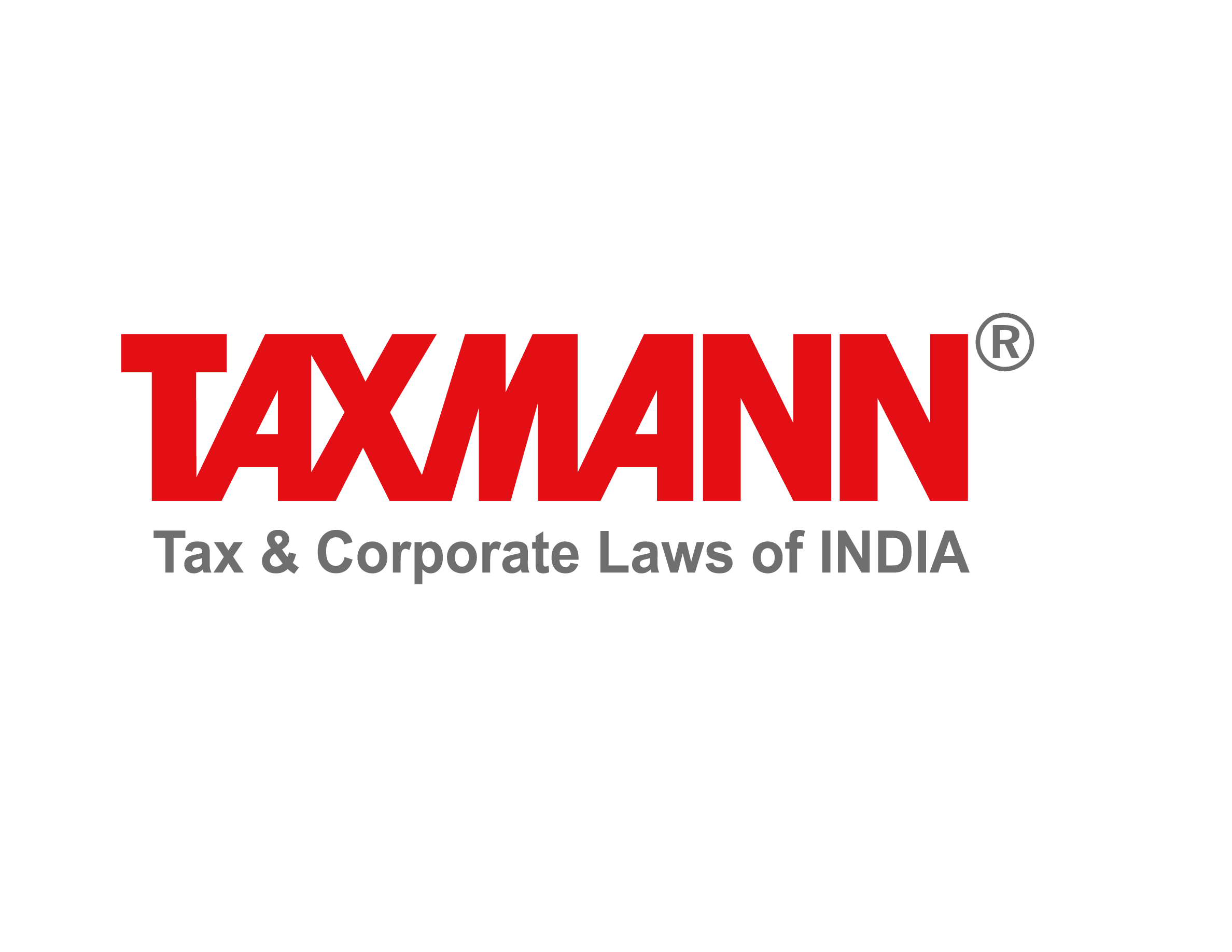
Taxmann Publications has a dedicated in-house Research & Editorial Team. This team consists of a team of Chartered Accountants, Company Secretaries, and Lawyers. This team works under the guidance and supervision of editor-in-chief Mr Rakesh Bhargava.
The Research and Editorial Team is responsible for developing reliable and accurate content for the readers. The team follows the six-sigma approach to achieve the benchmark of zero error in its publications and research platforms. The team ensures that the following publication guidelines are thoroughly followed while developing the content:
- The statutory material is obtained only from the authorized and reliable sources
- All the latest developments in the judicial and legislative fields are covered
- Prepare the analytical write-ups on current, controversial, and important issues to help the readers to understand the concept and its implications
- Every content published by Taxmann is complete, accurate and lucid
- All evidence-based statements are supported with proper reference to Section, Circular No., Notification No. or citations
- The golden rules of grammar, style and consistency are thoroughly followed
- Font and size that’s easy to read and remain consistent across all imprint and digital publications are applied
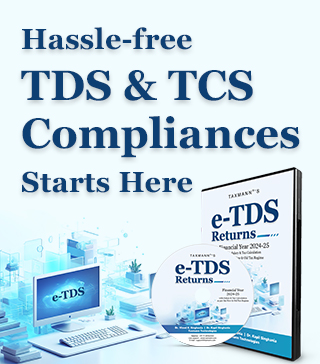
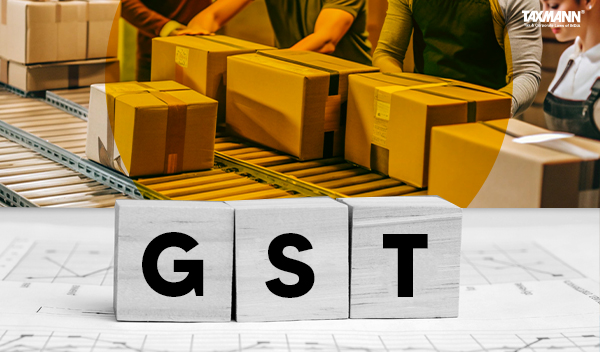



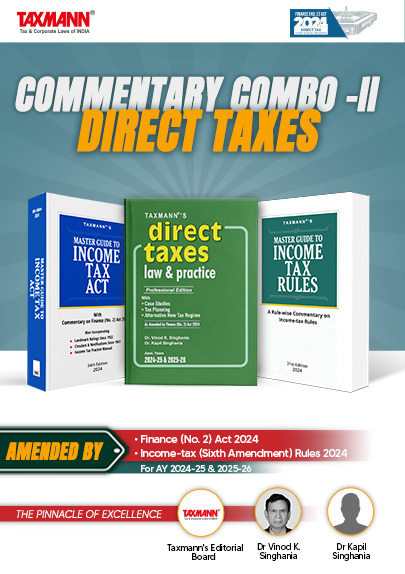
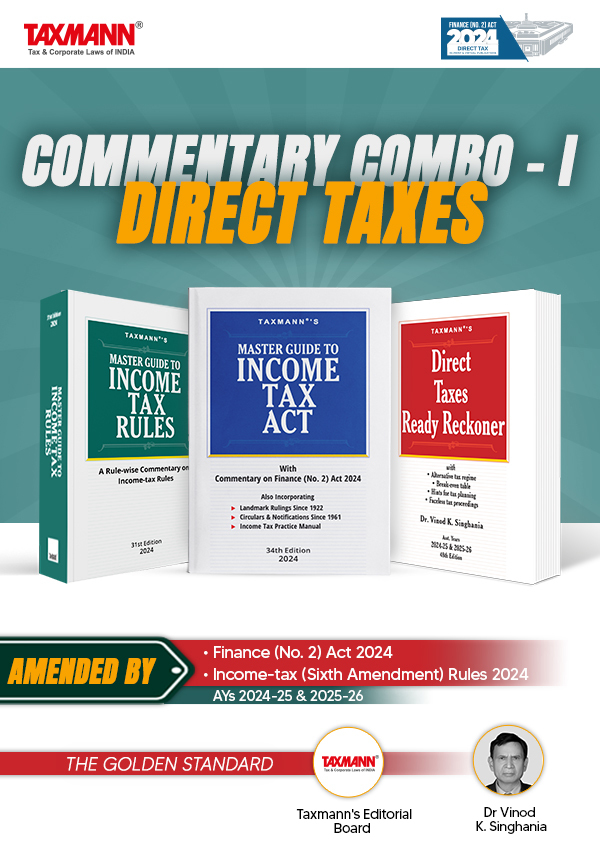
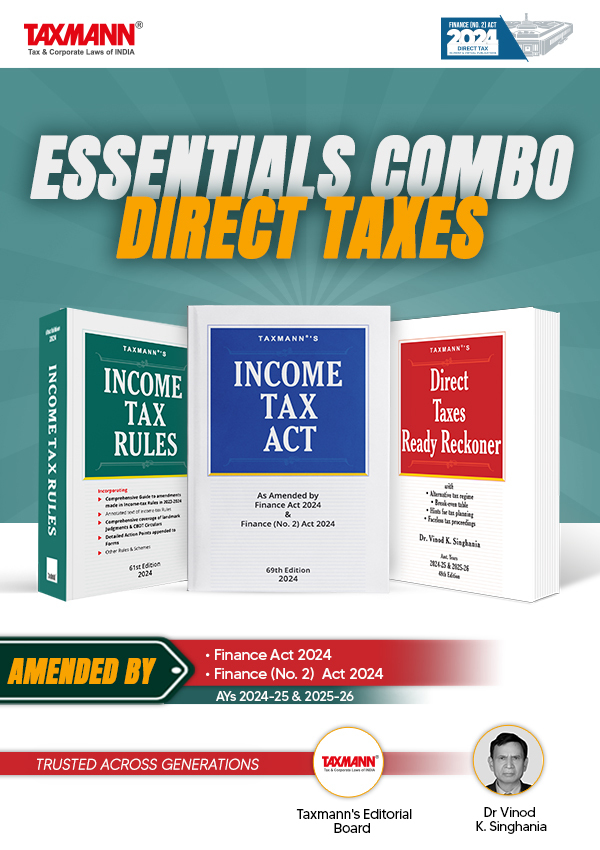
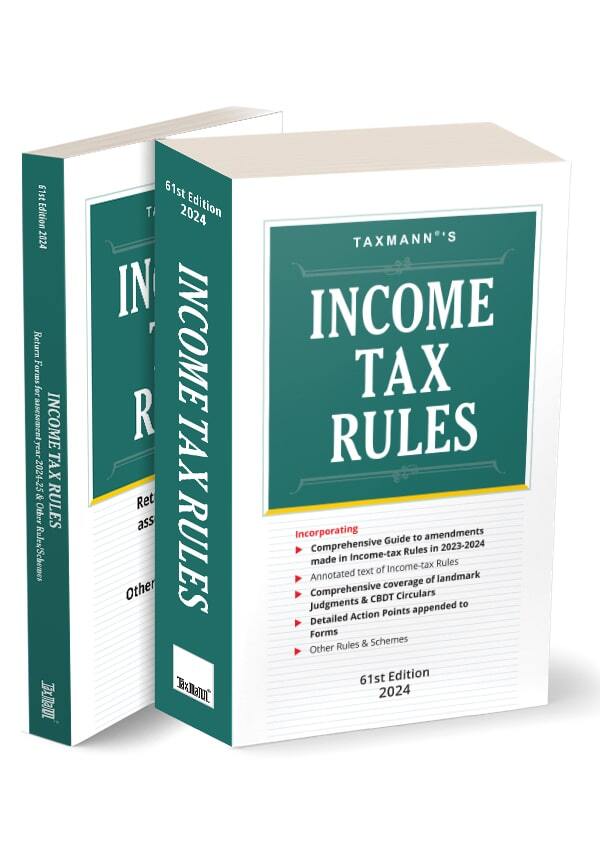


 CA | CS | CMA
CA | CS | CMA


